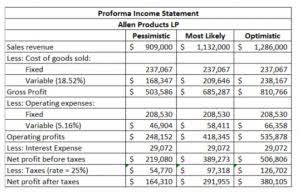
But when it comes to your company’s financial statements, there’s an important difference between the two, no matter how similar the terminology might seem. Some common intracompany transactions include loans or payments for supplies or products. These items are only shown on the individual financial statements for the individual companies. All four types have intergranular porosity, and all contain water primarily under unconfined or water-table conditions. The hydraulic conductivity of the aquifers is variable, depending on the sorting of aquifer materials and the amount of silt and clay present, but generally it is high. Aquifer thickness ranges from a few meters or tens of meters in the blanket sands along the eastern Atlantic coast of the United States to several hundred meters in the basin-fill aquifers of the southwestern United States.

Not all subsidiaries are included in the parent consolidated financial statement. Only the subsidiary which is owned more than 50% will be consolidated in the parent company. Moreover, the company will also consolidate if the subsidiary is under their control even ownership is less than 50%. Information provided in unconsolidated financial statements is typically not sufficient to meet the information needs of existing and potential investors, lenders and other creditors of the parent. Accordingly, when consolidated financial statements are required, unconsolidated financial statements cannot serve as a substitute for consolidated financial statements.
What is normally loaded clay?
This also applies if the parent company has less than 50% ownership but still has a controlling interest in that company. Obviously this does not mean that IFRS standards on for example Operating Segments (IFRS 8) should not be used. It implies that segmented financial information has to be reconciled to financial reporting lines already provided in the consolidated financial statements. As we said, special purpose reporting is common amongst joint ventures and other types of special agreements between businesses, where the joint venture members combine the involved transactions into a single set of financial statements. For instance, if a company has five subsidiaries but only two of them are involved in a specific joint venture, special purpose financials would consolidate the information for those two subsidiaries but exclude the others.
Within the one document, the parent’s and subsidiaries’ financial statements still remain distinct. Consolidated financial statements are of paramount importance in the world of finance and accounting. They offer a comprehensive and accurate view of the financial performance and position of companies under common control. These statements play a vital role in legal compliance, consolidated vs unconsolidated allowing companies to meet regulatory requirements in many jurisdictions and provide an accurate representation of the group’s financial health. In our example, unless the exiting controller saw the regulatory writing on the wall and implemented new accounting procedures to create GLs for the separate legal entities, it’s going to be a tough few months for the accounting team.
What is Underconsolidated Clay?
These intracompany transactions do not change the net position of the overall operation. You do not want to count revenue on products or services sold only to your affiliates. This makes sense, because consolidated financial statements account for all activities of all subisidiaries together.

A soil could be considered underconsolidated or unconsolidated immediately after a new load is applied but before the excess pore water pressure has dissipated. Or in some cases, maybe 60% of a company’s equity is public but the other 40% is some other form of ownership, perhaps a non-controlling interest. In these cases, if a transaction occurs between the two, the reporting entity – the 60% side – may record some financial result or effect stemming from the transaction. It would not, however, record it directly at the reporting entity level as it normally would without the non-controlling owner. After all, you can consolidate/combine leftover pizza, Pokémon card collections, bank accounts, and a whole slew of other things.
What Is the Difference Between Combining vs. Consolidating Financial Statements?
Also, provide adequate disclosure regarding collectability, intent to pay, or valuation, especially since to/from accounts can occupy a healthy portion of the balance sheet. This undertaking whatever updated systems or finance transformation is necessary to capture sufficient detail in your data. As an example, let’s say that Company ABC has a 40% controlling interest in its unconsolidated subsidiary, Business XYZ, which it created as an SPV for a new construction project in a foreign country that will only last for a year.
